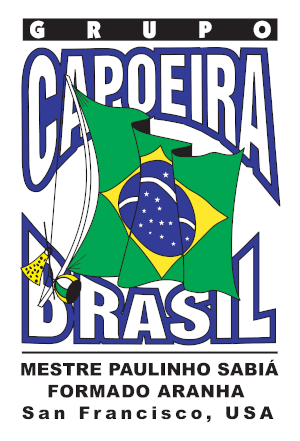The Berimbau is the predominant instrument in Capoeira and dictates the rhythm and nature of the game taking place in the Roda. The berimbau is made of a hard wooden bow, approximately 1.5 meters long, known as a verga and is strung with a steel wire called an arame which is usually taken from an old tyre. To produce the resonating sounds of the berimbau, a gourd is attached. This gourd is usually made from a dried calabash and is known as a cabaça. A caxixi (a shaker/rattle) is used along with a wooden stick around 12 inches long (baqueta). The baqueta strikes the string of the berimbau to produce its sound. Used in conjunction with these a media (coin) or a dobrão (stone) is pressed against the arame to produce different notes.
The Berimbau (thought to be the oldest musical instrument on Earth, older than the Aboriginal Digeridoo) is essential for controlling the rhythm in the game of Capoeira, dictating the pace of the game in the roda depending upon the speed and rhythm played.
There are three types of berimbau:
Gunga
Medio
Viola
Berimbau Gunga (1)
The Gunga is the largest of the three berimbau. It has the deepest sound, plays the role of
the bass; it keeps the rhythm and plays the basic theme.
Berimbau Medió (2)
The Medió compliments the Gunga by maintaining the rhythm and is the middle size,
mid range berimbau.
Berimbau Viola (3)
The Viola or Violinha is the berimbau that has the sharpest sound; it is responsible for the
syncopation or the improvisation. The berimbau viola has been described as being the
most difficult to play.
The rhythms produced by the berimbau, known as Toques, control the movement within the Roda. Depending on the rhythm, the participants of the jogo de Capoeira (game of Capoeira) can play slow and treacherous, fast and aggressive or open and harmonious. There are many different Toques de Berimbau and some are common to all schools, while others are played by certain groups.

